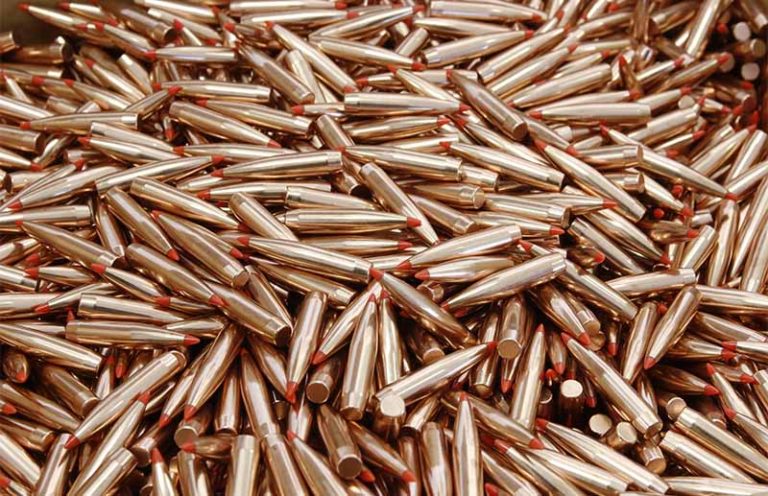
The recent and lingering ammo shortage has hurt. Here's how to keep shooting, even when supplies are down.
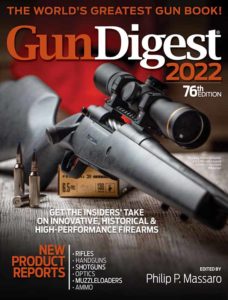
The battles between the Texas Rangers and 19th century Comanches illustrate our current conundrum over ammo shortages. Perhaps we can learn and benefit from their clashes.
The Comanche ruled West Texas for 150 years and held back “civilization” with its guns, steel and wheels. They regularly whipped Spanish, Mexican, U.S., and Texas military units sent to punish them.
They did it with clubs, spears, bows and arrows.
How, you must wonder, could sticks and string defeat the power and reach of rifles? (And we’re not talking flintlock muzzleloaders, but a combination of cap lock muzzleloaders and brass cartridge buffalo rifles.) The answer is a combination of blitzkrieg-like attack and high volume fire.
Comanche were superb horsemen, the North American equivalent of Genghis Khans Mongols who swept across Asia to create the largest contiguous empire the world has ever known. The Comanche’s empire was tiny by comparison, but they were no less the accomplished horse warriors. A fully trained Comanche warrior could ride full tilt while firing multiple arrows per minute at troops who had to dismount to fire and reload their rifles. While a soldier was sheltering behind his horse or saddle and reloading, his adversary was riding down on him. The tide began to turn only after Texas Rangers discovered Samuel Colt’s revolvers and combined them with Comanche-style horseback counter attacks. Turned out an accomplished horseman with a pair of six-shooters beat an equally competent horseman with a bow.

What does this history have to do with us and our frequent ammo shortages? It dramatizes our dependence as opposed to the Comanche’s independence. We, like the Rangers, are dependent on an elaborate supply chain stretching around the world. The Comanche, on the other hand, could withdraw deep into the backcountry, rebuild their arsenals of spears and arrows, and be back in the fight. Endlessly.
Modern Ammo Shortage
Trying to find ammunition for virtually any modern rifle in recent months has made me feel like a Texas Ranger west of the Pecos with an empty ammo pouch. Where can I find more? How will I procure more? More broadly, how can all of us guard against what are sure to be sporadic if not frequent if not perennial ammo shortages?
Obviously, retreating to our woodland redoubts to create more “arrows” would seem a sensible course of action. But can we? Short of reverting to bows and arrows, what can shooter’s do to remain active? Given limited supplies and rising costs of base materials — combined with panic buying, increased demand, hoarding, and our increasingly chaotic times — ammunition shortages could become chronic. The following are ten options.
- Shoot less often. This is not ideal, but a viable last-ditch effort. Were I down to my last 20 rounds of 270 Winchester I wouldn’t be burning them up on targets prior to the deer season.
- Order early and often. If Mother Hubbard’s shelves are bare, place an order for the next shipment. Do this at every local retail store and every on-line store. You never know who’ll come through or when.
- Send a mass email to your friends. Many retired hunters have old ammo supplies they might be happy to unload. Widows, especially, want or need to clear out the dearly departed’s guns and ammo.
- Estate and garage sales. You never know what you might find.
- Buy in bulk. When you can, obviously. More detail on this below.
- Handload. Of course you still need to lay in supplies of brass, primers, powder, and bullets, but once you have them you’re set to create all kinds of ammo. Details below!
- Buy rifles chambered for odd, uncommon cartridges. Many have noted that when all the 223 Rem., 6.5 Creedmoor, and 308 Win. are gone, a few lonely boxes of 250 Savage, 280 Remington or 338 Federal linger. Ah, but this cuts both ways. When ammo makers crank up to meet demand, they build 223, 6.5 Creedmoor, and 308 first. If they’re not too busy making 9mms.
- Sell all your other guns and keep one all-round, do-everything iron. This way you learn it inside and out, don’t waste ammunition, and can stock up on lots and lots of cases. You’ll be that oft-cited, deadly accurate shooter with one gun you know how to use. Except…
- Owning just one gun is less fun and more limiting. (I’m not crazy about hunting squirrels with a 7mm-08, although I’ve built reduced loads that can do it.) And if you suddenly discover there’s no ammo for that particular rifle — you’re out of options. No, I’d rather have a 22 rimfire, 17 rimfire, 22 centerfire or three, some 24, 25, 26, 27, 28, 30 calibers and keep on going. Someone’s bound to have a cartridge for one of them!
- Shop early and often. Yes, preparing to survive our all too common ammo shortages comes down to planning ahead. Alas, as I’m writing this “ahead” is already “behind.” If you didn’t fill the armory 8 or 12 months ago, this is currently not a good option.
Are These Fesible When Ammo's Short?
Our #1 option, shooting less, has long been standard operating procedure for many, perhaps most, casual hunters and gun owners. For decades a badge of honor for rural folks has been getting 20 deer with a 20-round box of ammo. The more extravagant need 40 because they like to zero the day before the opener.
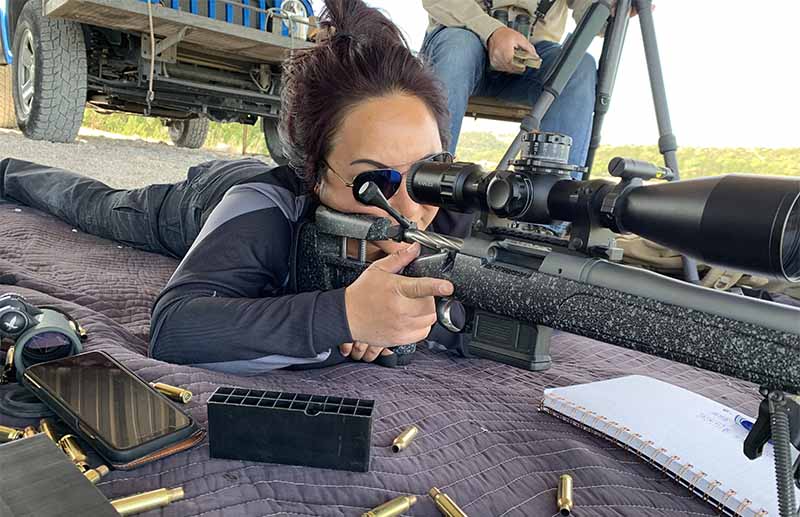
Such frugality might suffice for ultra-conservative hunters, but most shooters enjoy using their guns too much to let them languish in a safe 360 days out of the year. Yet time and money can be in short supply for them, too. How can any of us maintain and improve our shooting skills during price hikes and shortages?
By dry firing. Seriously. Just as baseball hitters visualize themselves seeing the stitching on a fastball, powering the bat through that ball and driving it over the centerfield fence, so can shooters visualize the perfect hold and sight picture, the perfect trigger break, the perfect cycling of the action for the follow-up shot.
If this sounds too esoteric bordering on voodoo, please reconsider. Pre-visualization coupled with “going through the motions” works in all sports. It’s especially effective in shooting because the shooter can move through every step of the operation except recoil. Think about what you do in a “dry run.” You carry the unloaded rifle slung over your shoulder. Pretend a buck appears in the far corner of the room. How will you smoothly and quickly get the rifle on target, align the front post or reticle on its shoulder, snick off the safety, and drop that firing pin? And when you hear the “click,” where was that sight? Still on the target? Or did you pull right and low?
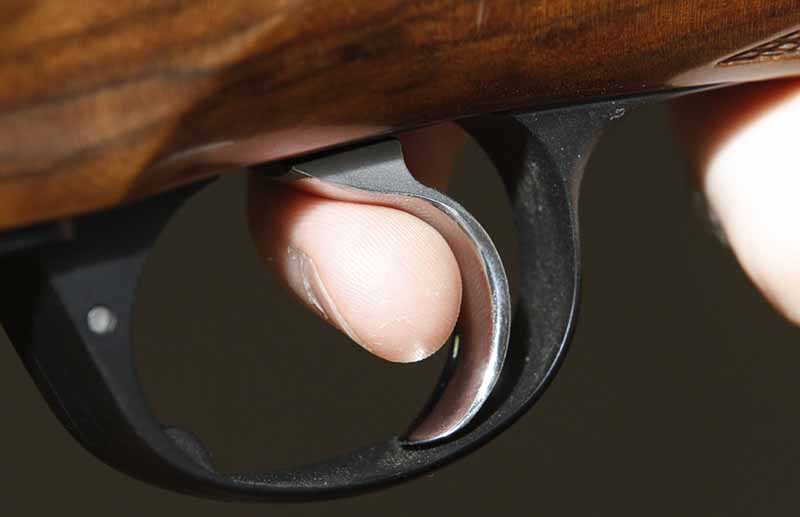
Dry firing even works on the bench. Watching your sight picture as the hammer falls can be a real eye opener. How did that reticle end up high and left? Champion competition shooters dry fire often and regularly. Everyday shooters discover that dry firing like this hones their muscle memory and trigger technique. And they can do this any day, everyday, free. No need to travel to the range. No burning up ammo stocks. Just significant improvement in handling, target acquisition, trigger control, and follow through. I’ve yet to meet a shooter who didn’t shoot more precisely after a round or twenty of dry-fire practice.
Bulk Ammo Purchases
While the click click click of dry firing will improve your skills, at some point you just need to see hits on targets. Ensuring sufficient ammo for this suggests buying in bulk when the buying is good. And there’s bulk to buy. It’s an expensive option for most of us, but trying to scrounge up a box or two of your favorite loads when stores are empty and scalpers are have jacked up prices by 100%— well, that’s expensive too. It may be too late today, but you can begin saving for tomorrow. This could be like starting a piggy bank for that new rifle or scope. Except it’s a case or two of ammo. Give up the daily beer, soda, or fancy coffee and within a month or two you’ll have the cash to lure hundreds of rounds of your favorite cartridges into your safe. But beware…

This might belabor the obvious, but test before you leap. Any shooter beyond an amateur knows he/she must determine which bullet is needed for a specific rifle, which brand or ammo featuring that bullet shoots it accurately, etc. You need to sample and test until satisfied, then make that bulk purchase. On the other hand, you can be like some shooters I hear about. They find a stack of ammo in a chambering they don’t own, but the ammo, and they go in search of a rifle to shoot it!
The super cautious might insist on bulk buying ammo from the same lot lest the manufacturer changed his recipe. The challenge there is getting the test box finished in time to catch the same lot in the store or on line. I don’t know if one can request a specific lot by number from online retailers, but if you’re picky, it might be worth a try.
Issues With Hoarding Ammunition
If and when you identify the perfect load for your rifle, grab all you think you’ll need for the next year — or lifetime. I realize this amplifies hoarding, but you can look at this another way: If today’s hoarders had stocked up three, ten, 20 years ago, they wouldn’t be cleaning out the shelves now. Besides, stocking up for the cautious, one-deer-a-year hunter might mean two boxes, maybe three. For the serious shooter who hunts widely and practices more widely, a case a year might barely suffice. Assess yourself and your shooting honestly. And don’t worry too much about not burning through all the rounds you buy. They could well be worth more 20 years down the road than they are today.
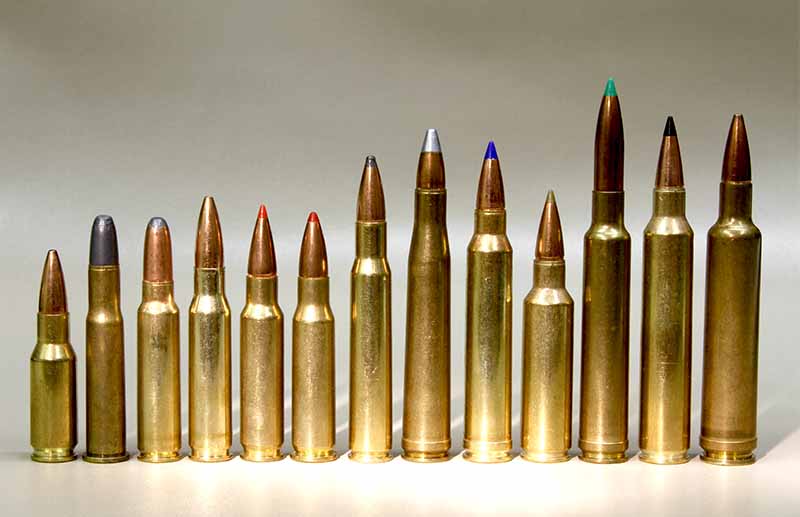
Don’t worry about ammo longevity. The stuff is durable, stable, and viable for decades. Store it in as dry and cool — or at least room temperature —place as possible. Keeping it in plastic bags minimizes brass oxidation and tarnishing. As a hedge against flood, fire, and theft, spread it across two or three locations. Lock and key are an excellent idea, too.
But the best way to keep a large supply of munitions fresh is to shoot from the back of the pile. Stack up your bulk supply, then every time you burn through a box or four, buy replacements as soon as they become available. Shoot your next rounds from the old stack and restock again. This program maintains a consistent supply of “hard times” ammo while maintaining longevity.
Hedge Your Bets Handloading
Handloaders have long gloated in times of ammo shortages. No problem. I can make more. But these days even DIY has become challenging. Powder, bullets, and primers are scarce as loaded ammo. Everyone is sold out of everything.
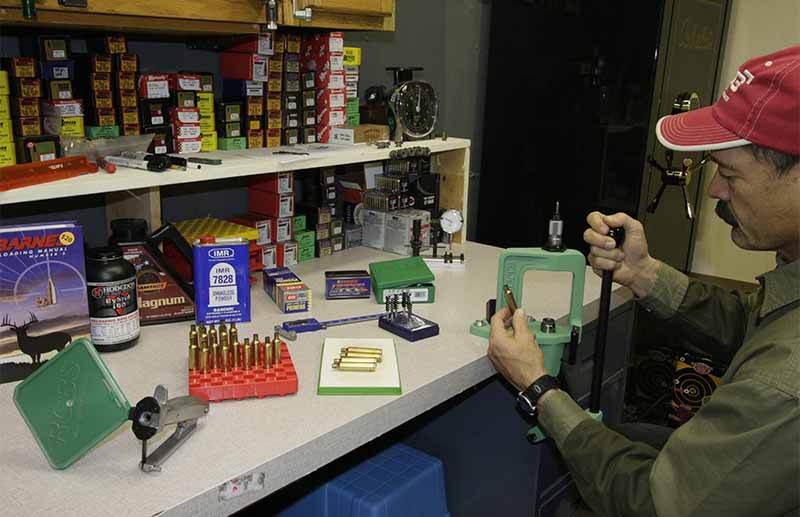
This throws the reloader into the same hopper as the factory ammo shooter. You have to buy ahead and stock up. Fortunately, components are as durable as fully loaded ammo. Bullets and brass don’t go bad. They might tarnish, but that’s just cosmetic and can be polished off. Primers are as durable and long-lived as powder if stored similarly, so let’s plunge into powder maintenance. Powder, if stored cool and dry, lasts for decades with little or no loss in power. But it doesn’t remain viable indefinitely.
According to Hodgdon, a major powder manufacturer, remnant acids used in the making of smokeless powder break down the main ingredient, nitrocellulose. Left unchecked, this has led to self-ignition. Ka-boom in storage. To prevent this, stabilizing chemicals are added. These react with the acids to slow decomposition. Eventually, however, the stabilizers are consumed, leaving the acids to resume their degradation.
This acidic break-down accelerates with heat, so it’s best to store powder in airtight containers at comfortable room temperature or lower. Attics, dank basements, hot barns and outbuildings are not good storage sites. Unopened canisters of new powder should last decades with little or no degradation in performance. Opened canisters shouldn’t be far behind, but keep lids closed and avoid opening them frequently in high humidity. The moisture probably doesn’t degrade the powder so much as weaken it by raising its moisture content. Of course it can be dried to regain its potential.
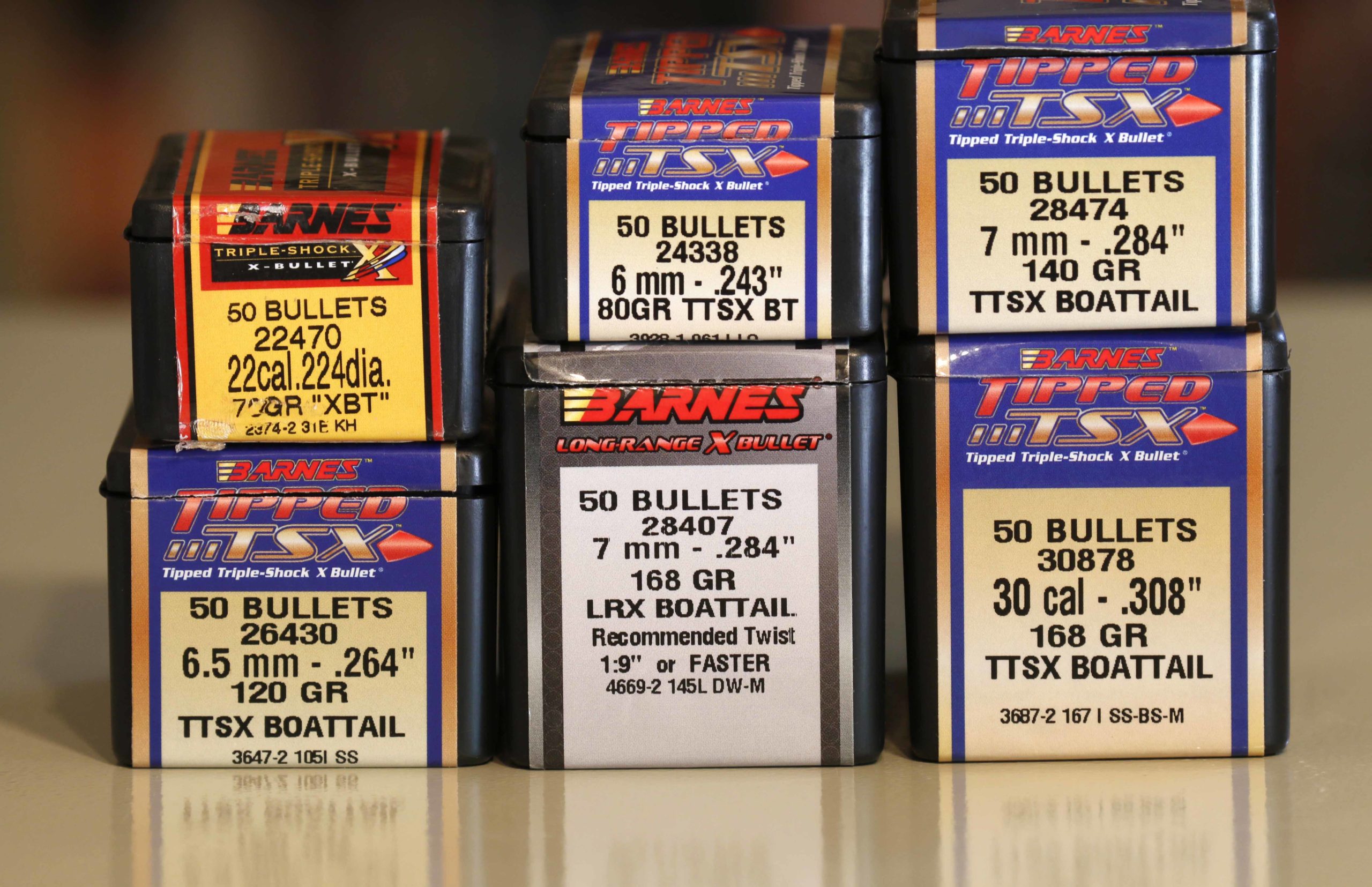
Powder can be checked by sight and smell. If you lightly shake an open can and any rusty fumes or vapors rise from it, bad. Advanced degradation. If the powder is colored red or rusty, also too far gone. It will still ignite, but will not have its original potency or consistency in burning rate. More likely you’ll detect an acidic odor from degrading powder. Some say it smells like vinegar, others ammonia or muriatic acid. Fresh powder has a chemical, metallic odor too, of course, so if you have fresh to compare against old, you’ll have a benchmark.
Deteriorated powder is probably no more dangerous than fresh, but its inconsistency could give rise to pressure spikes. Or lower. Subtle powder decline should show up as weaker handloads. If the muzzle velocities of your newest handloads drops significantly from previous levels made with the same powder, suspect deterioration and put that powder to work growing corn.
Corn? Well, maybe. Standard wisdom for decades has been to sprinkle old gun powder on lawns and gardens and water it in as fertilizer. There are nitrates in nitro-cellulose. The cellulose part is usually from wood. All organic! Some folks are concerned, however, about traces of ethyl acetate, paraffin waxes, and deterrent chemicals like dinitrotoluene (carcinogenic.) Might be smarter to sprinkle on the grass and water it in.
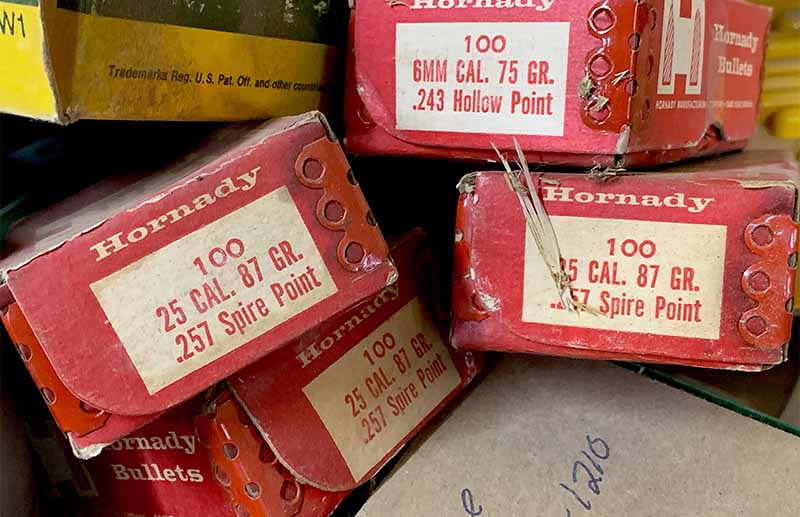
The alternative to fertilizing is burning. Yes, you can safety burn smokeless powder because it is not an explosive that detonates, but deflagrates, i.e. burns. Burning under close confinement in rifle barrels leads to what sounds like an explosion because the heat conversion of the solid to a gas results in massive expansion. It is this high pressure gas escaping the muzzle that creates the loud explosion of sound. It’s like a glorified balloon pop.
Out in the open air, however, a line of smokeless gun powder merely burns hot and progressively. To safely dispose of it, spread it in a shallow line well away from flammable materials (a driveway works well) and ignite one end.
Variety Beats Ammo Shortages
Our final investigation returns us to #9 above. Multiple rifles in multiple chamberings. Storing a long supply of one or two cartridges does sound simple, but storing many seems the better option for keeping at least some of them fed. When a run on the ammo banks depletes all the 308 Winchester, 223 Remington, and 6.5 Creedmoor, you might still find a scattering of 284 Winchester, 6.5×55 Swede, or 338 Federal.
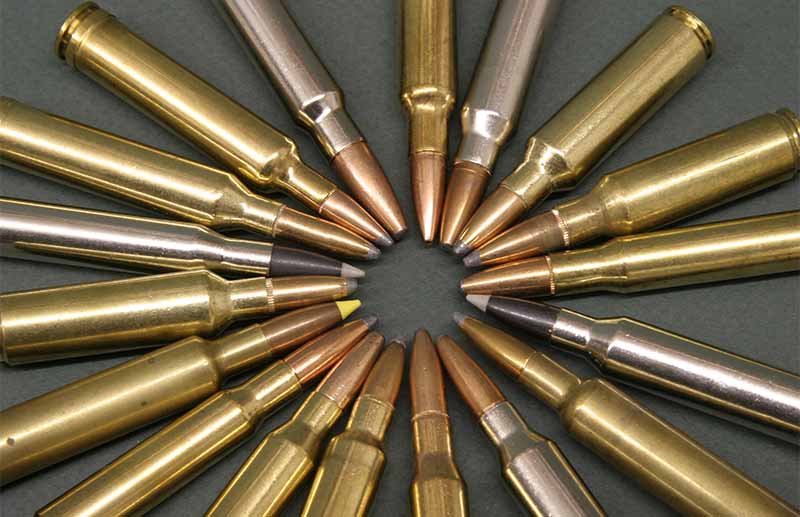
Variety is the spice of life. Who wants to limit all of his shooting and hunting to a 30-06? If you like to shoot gongs at extreme range, whitetails in heavy woods, feral hogs in large numbers, Cape buffalo now and then, or sheep across a wide mountain basin, you’ll likely want or even need a number of different rifles and cartridges to meet those situations. So don’t let the fear of ammo shortages constrain your collection. Get the rifles you need or want for the kind of shooting you desire and then keep up with ammo needs as outlined above. When the pickings get slim. you’re more likely to find something you can shoot if you have more options.
Say, is that a box of 257 Roberts I see on that shelf?
Editor's Note: This article is from Gun Digest 2022, 76th Edition, available at GunDigestStore.com.
Raise Your Ammo IQ:
- Beyond The 6.5 Creedmoor: The Other 6.5 Cartridges
- The Lonesome Story Of The Long-Lost 8mm
- Why The .300 H&H Magnum Still Endures
- .350 Legend Vs .450 Bushmaster: Does One Win Out For Hunting?

Next Step: Get your FREE Printable Target Pack
Enhance your shooting precision with our 62 MOA Targets, perfect for rifles and handguns. Crafted in collaboration with Storm Tactical for accuracy and versatility.
Subscribe to the Gun Digest email newsletter and get your downloadable target pack sent straight to your inbox. Stay updated with the latest firearms info in the industry.

![Best Concealed Carry Guns In 2025 [Field Tested] Wilson Combat EDC X9S 1](https://gundigest.com/wp-content/uploads/Wilson-Combat-EDC-X9S-1-324x160.jpg)


![Best 9mm Carbine: Affordable PCCs [Tested] Ruger Carbine Shooting](https://gundigest.com/wp-content/uploads/Ruger-Carbine-Shooting-100x70.jpg)
![Best AR-15: Top Options Available Today [Field Tested] Harrington and Richardson PSA XM177E2 feature](https://gundigest.com/wp-content/uploads/Harrington-and-Richardson-PSA-XM177E2-feature-100x70.jpg)

I work in a place where I sell ammo and guns. I have told a few people that this year you need to find ammo first, then go out and buy a rifle for it. it might be easier!!! I am joking of course, but it might actually be easier.
Thanks I learned a lot. Ignore the trolls!
Ben is correct. Just TRY to find the exact powder your rifle(s) like, or primers or ANY component!
The when you do find it you also “find” the prices have doubled!
No Joke.
Practicing with a Gsight can keep your skill level high
4 batteries will give you 10,000+ shots
It really, really quickly improves hip shooting
If you can’t find components, you can’t reload. This article is a joke!!!
I agree Ben, I would be hard pressed to find 100 brass cases, 100 primers, a set of dies, a shell holder, and a pound of suitable powder for any common caliber in a month. This just isn’t the time to start reloading.We